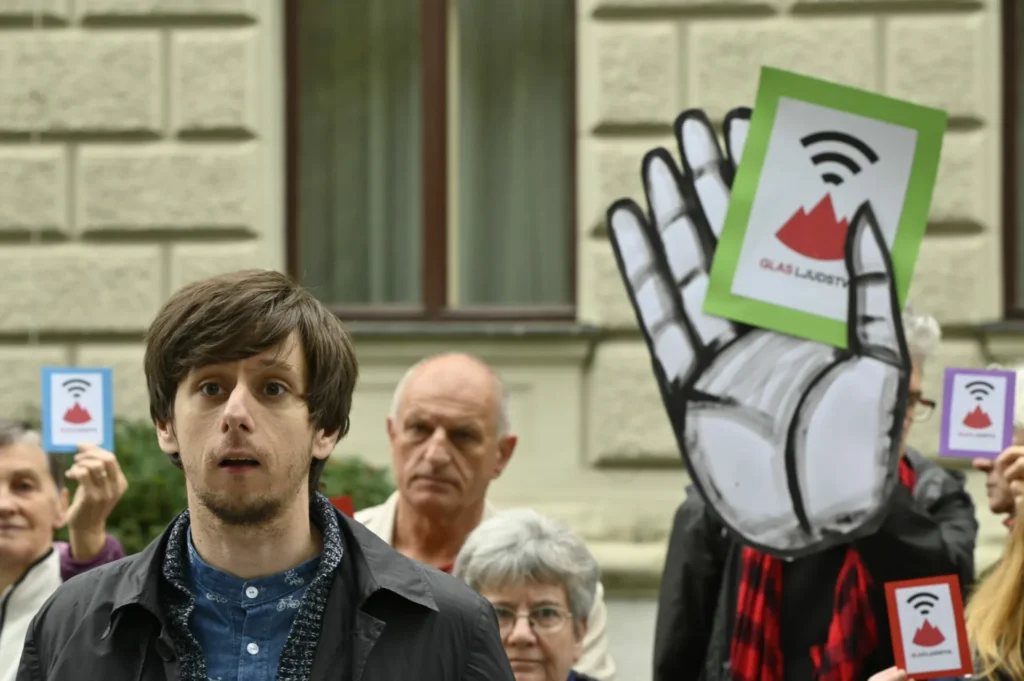Non-governmental organisations are often non-governmental in name only. Many rely on budgetary funding and promote the ideas of their financiers, who are most often left-wing political parties. Assessments that these organisations are in fact just extensions of (left-wing) governments are not unjustified. The European political group Patriots for Europe (PfE) has published a complete list of non-governmental organisations sponsored by European taxpayers on a special website, and the list, of course, includes well-known figures from Slovenian political life.
“ The European Commission directly finances thousands of non-governmental organisations (NGO) throughout Europe. A great number of these organisations pursue political activities. Contrary to the traditional principles of civil society, they do not represent certain groups of society, but the voice and will of Brussels institutions. This website is an essential tool for ensuring transparency. It provides a comprehensive database of the organisations that were supported by the European Commission from 2019 to 2023,” reads the top of the NGO Transparency website.
Back in April this year, the European Commission already acknowledged that it had funded non-governmental organisations that were directly linked to its political agenda. What is more, lobbyists from these organisations even lobbied Members of the European Parliament, the very people who had approved the funding for their activities. The funding was mainly provided through the LIFE project. It was an open secret that this highly controversial practice was commonplace in the European Parliament, but in April, it was finally publicly acknowledged and recognised as problematic. The acknowledgement was welcomed by both the European People’s Party (EPP) and the more conservative Patriots and European Conservative and Reformists Group (ECR). These same political groups then demanded transparent disclosure of the organisations and the amount of their funding.
This is far from the first case of non-transparent operation of the European Commission. As we have already learned from the Slovenian case, the European Commission did not want to disclose the content of the talks between former Commission Vice-President Věra Jourová and former Constitutional Court President Dr Matej Accetto, which took place during the Commissioner’s visit to Slovenia. It was only after a lawsuit filed by MEP Dr Milan Zver that the General Court of the European Union ruled that the information in question must be disclosed.
Over 500 Slovenian non-governmental organisations
The NGO Transparency website provides a comprehensive list of non-governmental organisations that have received European funds from at least one of the European Union bodies. There are approximately 37,000 NGOs on the list, including well over 500 from Slovenia. The complete list is available at the following link: https://www.ngotransparency.eu/
Among them are many well-known NGOs that are well-known to the general public from domestic political life. These include the Peace Institute (Mirovni inštitut), Sloga, Focus (which was particularly active in the campaign for the water referendum), the Legal Centre for the Protection of Human Rights and the Environment (PIC), the left-wing Radio Študent, the Slovenian Consumers’ Association, and the Pride Parade Association. The Legal Centre for the Protection of Human Rights and the Environment, Focus, the Peace Institute, and the Pride Parade associations are also members of the conglomerate of left-wing non-governmental organisations called “Glas Ljudstva” (Voice of the People). In the past, we reported that non-governmental organisations united under this name had already received more than 40 million euros. More than two years later, due to the open purse strings of Golob’s government, this figure is certainly much higher.
The amounts are staggering, and European taxpayers have a right to ask whether this kind of spending makes sense. For example: over the years, the Peace Institute has received 230,999.88 euros, 202,514.68 euros, 160,751.17 euros, 141,937.6 euros, 127,933.39 euros, 123,469.49 euros, 100,479.52 euros, 89,222.22 euros, 84,228.61 euros, 74,767.22 euros, 65,843.59 euros, 57,644.67 euros, 56,816.97 euros, 50,379.11 euros, 45,994.01 euros, 45,669.69 euros, 44,029.43 euros, 29,355.06 euros, 24,999.94 euros, 13,264.71 euros, and finally, 2,460 euros. Altogether, this amounts to almost 1.8 million euros.
Of course, domestic funding must also be added to these amounts. Since 2015 alone (the new version of Erar – the web application for the portrayal of public money spending in the Republic of Slovenia – does not show older data), they have drawn over 6 million, or 6,092,568.47 euros to be precise. The institute was founded by Darko Štrajn and Ante Kuzmanić. One of the former representatives of the activist organisation was the current constitutional court judge Neža Kogovšek Šalamon, and the institute’s current director is Iztok Šori.
The list also includes other NGOs that do not have an explicit political agenda, such as firefighting and sports associations, which actually operate in the interest of the general public. Few people object to the financial assistance that they receive.
This is how non-governmental organisations help the left to stifle public debate
Left-wing political parties, the media outlets that are subordinate to them, and non-governmental organisations are closing down the public information space. How? Let’s say an NGO that is supposed to represent the public interest and opinion organises a press conference on a “burning” issue. The press conference is attended by a publicly funded media outlet, which summarises what has been said, and then asks a like-minded political party for a response. This results in an “independent” news report that appears to contain all the elements of a proper news report.
But only on the surface. In reality, both the media and the non-governmental organisation have the same patron – the taxpayer, whose money is managed by a political party or group of related political parties, which thus effectively create the illusion of public consensus on a general social issue. Criticism of the supposed consensus is prevented by silencing critical voices through branding them as intolerant or simply declaring that certain political views are outside the democratic consensus and therefore unworthy of response. Exposing such stories is often presented as an attack on the “civil society.”
Ž. K.


